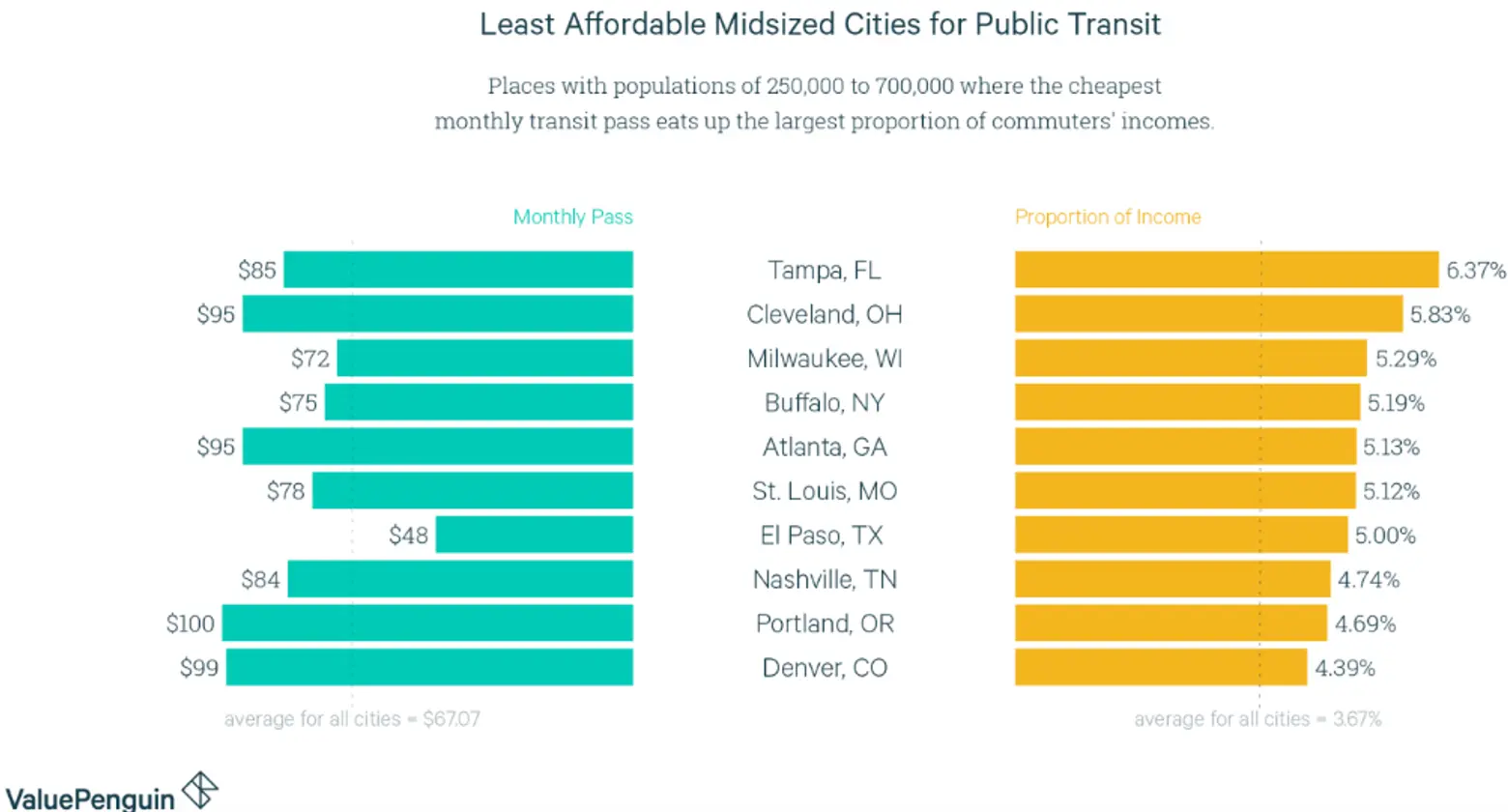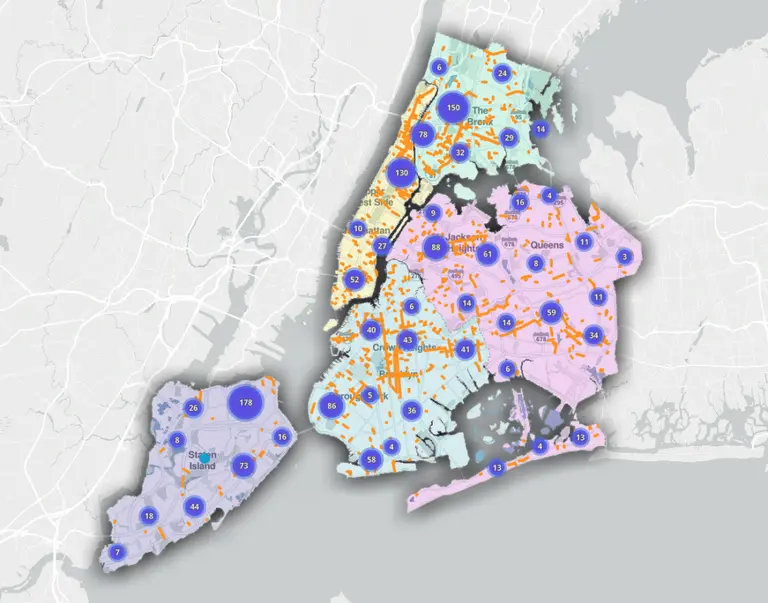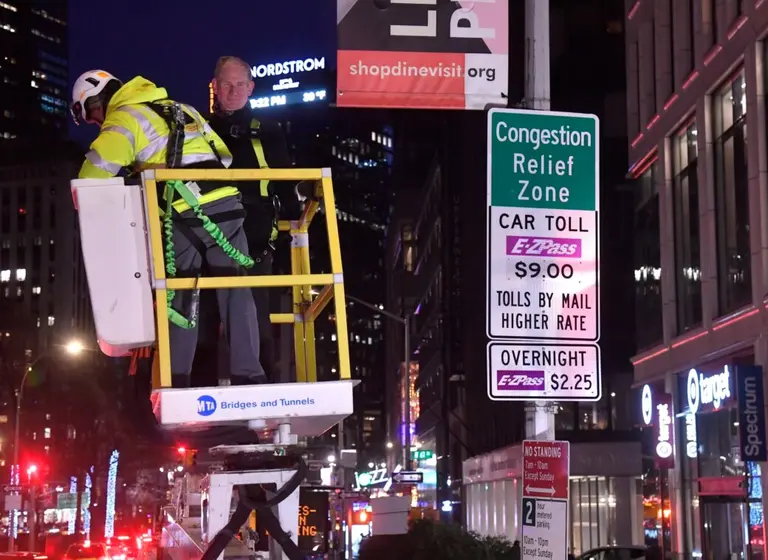The least affordable U.S. city for public transit isn’t NYC (and more fun facts about the cost of commuting)

In light of NYC’s recent subway fare hike that bumped the price of a monthly pass to $121, the data jocks at ValuePenguin took a look at public transportation systems throughout the U.S. and ranked them according to affordability, based on the cost of a pass as a percentage of income and the median income of the city’s commuters. Among the findings: New York City’s transit system isn’t the most unaffordable; that honor goes to Los Angeles. Washington D.C. topped the most affordable list among large cities, followed by San Francisco and Boston.

All cities with over 5,000 workers 16 and older who made use of public transportation to get to and from work were included in the study, which took a look at 73 cities across the U.S., comparing the cost of the least expensive monthly passes in each to the income of those who use the public transit system.

The standards for “affordability” were based on how much of the average commuter’s paycheck goes towards taking a bus or train to work. The price of passes and incomes varied widely from city to city, making that percentage a lot different even though the price of a card might be almost the same.
Fares in New York City are among the highest in the country. However, because the city’s commuters pull in higher incomes compared to most cities, they can more easily afford the high fares: The city’s commuters spend 3.62 percent of their average monthly income on a pass, which is only slightly above the national average of 3.2 percent, putting New York in the middle of the pack among all the cities analyzed.
Monthly passes in Los Angeles and Miami-Ft. Lauderdale cost more than 8 percent of the average commuters’ income (though the residents of those cities have higher incomes as well) making them the least affordable transit systems of all. The most affordable cities for commuters overall included Washington D.C. (the only big city on that list), Trenton NJ, and Bridgeport, Connecticut, where riders only had to part with between one and two percent or so of their incomes for a monthly pass. Other cities that scored high for affordability–Albuquerque, NM and Durham, NC, for example–were low to medium in affluence, but offered passes that were a serious bargain at only $20 to $30.
The analysis shows that some cities are relatively unaffordable because “commuters who make far less than New Yorkers are forced to pay New York-like prices.” In Cleveland, Portland, Atlanta, and Denver, passes cost around $100. In some cities–El Paso, Springfield MA, and Dayton OH–commutes ring in at below-average costs, but commuters are also notably poor.


But what about the quality–or even quantity–question that wasn’t mentioned in the study? New York City’s MTA system may cost a lot to ride, but it goes pretty much everywhere, it runs 24/7 with some exceptions, and with the usual gripes and snafus aside, is safe and clean given the size and territory covered. Among the winners in affordability, neither San Francisco nor Boston trains run late at night, which effectively removes them as an option though you’re still paying for the service with a pass. Top contender D.C. has been showing us all up lately: A recent bike share report showed that city’s bike sharing program as being the nation’s most well-stocked and widely-used.

See the full rankings here.
RELATED:
- MTA approves fare hike, monthly MetroCard will increase to $121
- ‘Freedom Ticket’ will offer a transit discount to those in outer Queens and Brooklyn
- Is it illegal to swipe someone through with your MetroCard?
- How Citi Bike stacks up against other U.S. bike shares
All charts/data via Value Penguin









































